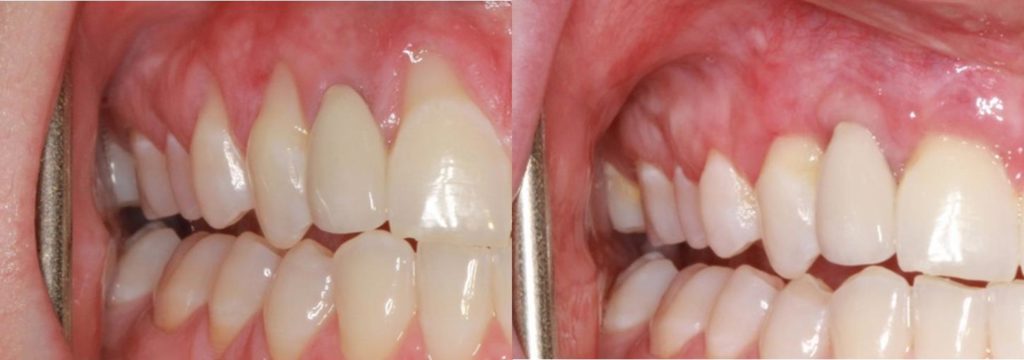Receding Gums Can be a Sign of a Larger Problem
Gingival (gum) recession is a condition in which the margin of the gums surrounding the teeth begin to
pull back, exposing more of the tooth’s root structure. It is a very common condition for adults, especially
those over the age of 40.
Although gum recession can be quite common, it should be taken seriously. It can cause a number of
problems including tooth decay, sensitivity, a compromised appearance, bone loss, and even possible tooth
loss. Often times, recession can occur due to overly aggressive tooth brushing, periodontal disease,
genetics, teeth grinding or clenching, and even tongue jewelry.

Gum Recession
Gum recession is a condition that occurs gradually. It is often referred to as becoming ‘long in the tooth’.
Many times it goes unrecognized or untreated until the teeth become sensitive or the smile begins to look
less attractive. Lucky, there are several ways to treat gingival recession.
Treatment
A new technique called the Pinhole Surgical Technique can successfully treat gingival recession. This
technique is a sophisticated way to move receding gingiva back into place without grafting surgery. It
provides adequate root coverage and generally doesn’t require any cutting, stitching, or downtime
following the procedure.
Patients may also choose to treat their gum recession with a connective tissue graft procedure. This is
where the patient’s own connective tissue is taken from the palate and used to cover the area of recession.
Another treatment option involves using allograft material such as Alloderm or freeze-dried donor tissue to
cover the areas of recession.
Gingival recession is best treated early on. If you are experiencing tooth sensitivity or have noticed your
teeth looking longer, you should contact a periodontist in your area to have it treated before the gum
recession worsens.
